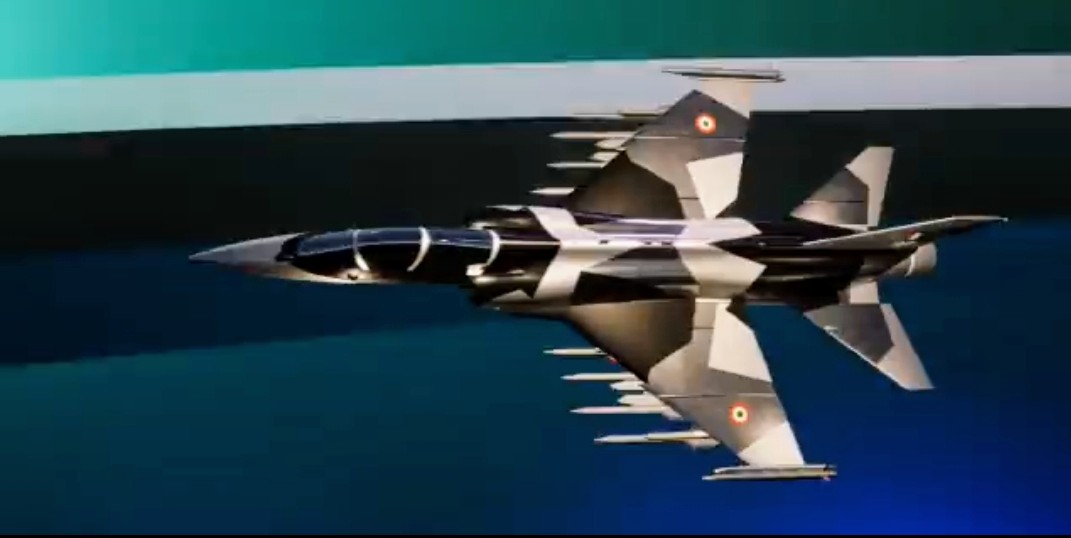SOURCE: AFI


India’s Hindustan Aeronautics Limited (HAL) has been a prominent player in the development of indigenous defense technologies, including the Light Combat Aircraft (LCA) Tejas, which has gained significant recognition. HAL’s proposed new aircraft, the HLFT-42 (Hindustan Lead-in Fighter Trainer), is designed to serve as a supersonic trainer and light fighter aircraft. While the aircraft is still in its conceptual phase, it is expected to play a pivotal role in providing advanced training to pilots before transitioning to more complex fighter jets.
However, the HLFT-42 could face substantial challenges in the global defense export market. The emergence of cheaper, more advanced supersonic fighter trainers, such as the T-7 Red Hawk from Boeing and Hurjet from Turkey, presents a formidable threat to the HLFT-42’s success in international markets.
The HLFT-42 is envisioned as a supersonic trainer that would offer advanced training capabilities to air forces worldwide. It is designed to meet the needs of nations looking for affordable, capable trainers that can simulate the experience of flying more advanced fighter jets. The aircraft is also touted as a potential light fighter platform, able to perform basic combat missions in addition to training roles. Its supersonic capabilities, combined with its light-weight design, are intended to bridge the gap between trainer jets and frontline fighter aircraft.
HAL aims for the HLFT-42 to compete in the global market by providing an affordable yet capable alternative to more expensive, complex trainers. However, with the increasing availability of advanced and cheaper supersonic trainer aircraft like the T-7 and Hurjet, the HLFT-42 could struggle to gain a foothold in the competitive export market.
The T-7 Red Hawk, developed by Boeing in collaboration with Saab, has emerged as one of the most promising supersonic trainer aircraft in recent years. The T-7 is designed with a cutting-edge digital fly-by-wire system, offering high-performance training capabilities and the ability to simulate various combat scenarios. With its advanced technology, the T-7 is poised to be a leading choice for air forces worldwide, particularly the United States Air Force, which has already placed a large order for the T-7 to replace its aging T-38 Talon trainer fleet.
One of the key factors working in favor of the T-7 is its cost-effectiveness and low operational cost. Boeing has emphasized the T-7’s lower life-cycle costs, which is a significant selling point for nations looking for affordable training solutions. Additionally, the T-7’s high adaptability, ease of maintenance, and advanced avionics make it an attractive option for air forces in both developed and emerging markets.
The T-7’s entry into the market presents a major challenge to the HLFT-42. The aircraft’s proven design, advanced technology, and backing by a major aerospace manufacturer like Boeing give it a clear competitive edge. The T-7’s combination of performance and affordability makes it a formidable contender for the global trainer aircraft market, potentially leaving the HLFT-42 struggling to compete.
The Hurjet, developed by Turkey’s state-owned aerospace manufacturer Turkish Aerospace Industries (TAI), is another new supersonic trainer aircraft that poses a significant threat to HAL’s HLFT-42. The Hurjet is being developed as a light attack and advanced trainer aircraft with supersonic capabilities. It is expected to offer superior performance, cutting-edge avionics, and a versatile platform for training fighter pilots.
One of the Hurjet’s major advantages is Turkey’s strong position in the global defense market, particularly in countries seeking non-Western alternatives to traditional fighter trainers. Turkey has already demonstrated its ability to produce highly capable and affordable defense platforms, and the Hurjet could easily attract attention from countries in the Middle East, Africa, and Asia. The Hurjet’s competitive pricing, combined with its modern design, positions it as a strong contender in the same market that HAL is targeting with the HLFT-42.
HAL has a track record of delivering aircraft for the Indian Air Force, but it has limited experience in exporting large numbers of fighter aircraft. The T-7, on the other hand, is backed by Boeing’s extensive global presence and marketing capabilities. Boeing’s reputation and established relationships with air forces around the world give the T-7 an upper hand in terms of international sales. Similarly, Turkey has a growing presence in international defense markets, particularly in countries seeking affordable alternatives to Western suppliers.
While the HLFT-42 holds potential as a capable, supersonic trainer aircraft, its export prospects may be limited due to the rising competition from more advanced and cheaper alternatives like the Boeing T-7 Red Hawk and the Turkish Hurjet. The T-7, with its superior technology, low operating costs, and backing from a global aerospace giant like Boeing, and the Hurjet’s competitive pricing and growing international appeal, position them as formidable competitors in the trainer aircraft market.